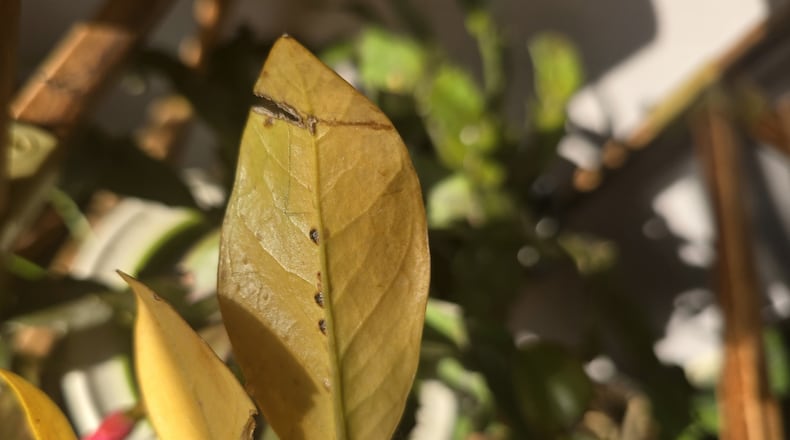Others take a bit more time to adapt. Ficus benjamina, or weeping fig, for instance, is not happy anytime you move it, even if it’s from one room to the other. Plants like philodendron, Chinese evergreen, and ponytail palm haven’t missed a beat. They look pretty good.
Remember to cut back on watering; only water as needed. A few have gone two weeks without water. I also have a tree tomato that needs watering every three or four days. This is not a tomato plant, but it is in the nightshade family.
The tree tomato is a popular fruit used in juices and a traditional Ecuadorian hot sauce called aji. This sauce can be really hot, really mild, or anywhere in between. We use it on everything when we take our Master Gardener Volunteers to Ecuador for a volunteer outreach experience.
This fruit grows on small trees and is also known as tamarillo (four-foot). It is hardy to zones 9-10, so I must bring it in. A colleague bought seeds and gave me the four-foot plant. It is sucking down the water.
It has fruit on it, but they will never mature in the house – not enough sun and heat. She had one mature outdoors, but it wasn’t flavorful like the ones in Ecuador. The egg-shaped fruits are rich in vitamins and minerals. Hers were somewhat bitter.
Back to houseplant care, check your plants for any signs of insects. I noticed on one of my ZZ or Zamioculcas zamiifolia (see why it’s called ZZ!!), a shiny, sticky substance or honeydew. This is excreted by pests such as aphids, soft scale, whitefly, and mealybugs.
These insects insert their mouth parts into a plant and suck the juices, secreting a sticky substance. Eventually, a black fungus called sooty mold starts to grow on the honeydew.
If you find this on plant leaves, or even on the table where your plant is sitting, check the underside of the leaves and the stem closely. I did this and found scale insects.
I noticed a leaf yellowing earlier on the ZZ plant, but thought maybe it was from a lack of or too much water. I should have checked closely when I first noticed it.
I used a systemic insecticide that has imidacloprid, which is absorbed by the roots into the plant. As insects feed, they die. It’s safe to use in the house, and it’s labeled for houseplants. Follow label rates and instructions.
I also take a cotton ball and alcohol and scrape off the most noticeable ones. Then I put the plant in the sink and washed off the honeydew.
Going through the winter, if you see these symptoms and signs, watch for yellowing of leaves, sticky honeydew, leaf drop, spots, and wilting on the houseplant, and inspect a little closer to determine the cause.
Pamela Corle-Bennett is the state master gardener volunteer coordinator and horticulture educator for Ohio State University Extension. Contact her by email at bennett.27@osu.edu.
About the Author
